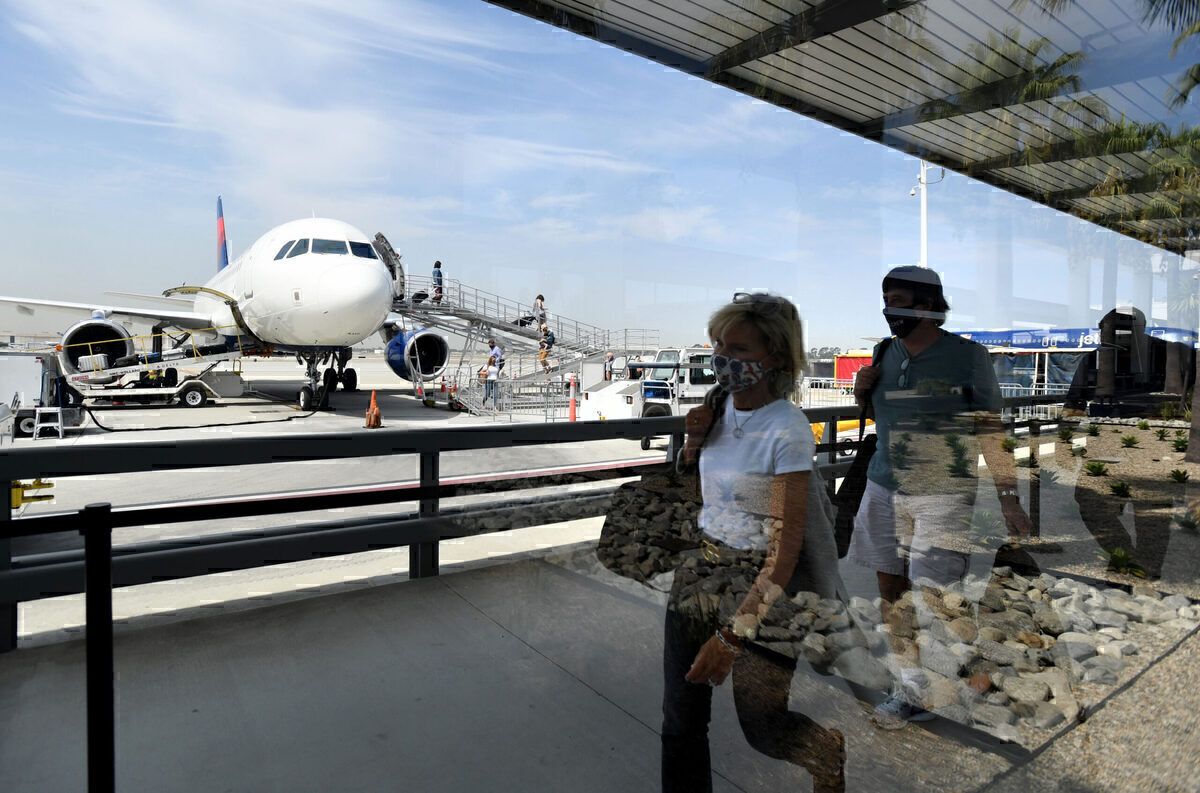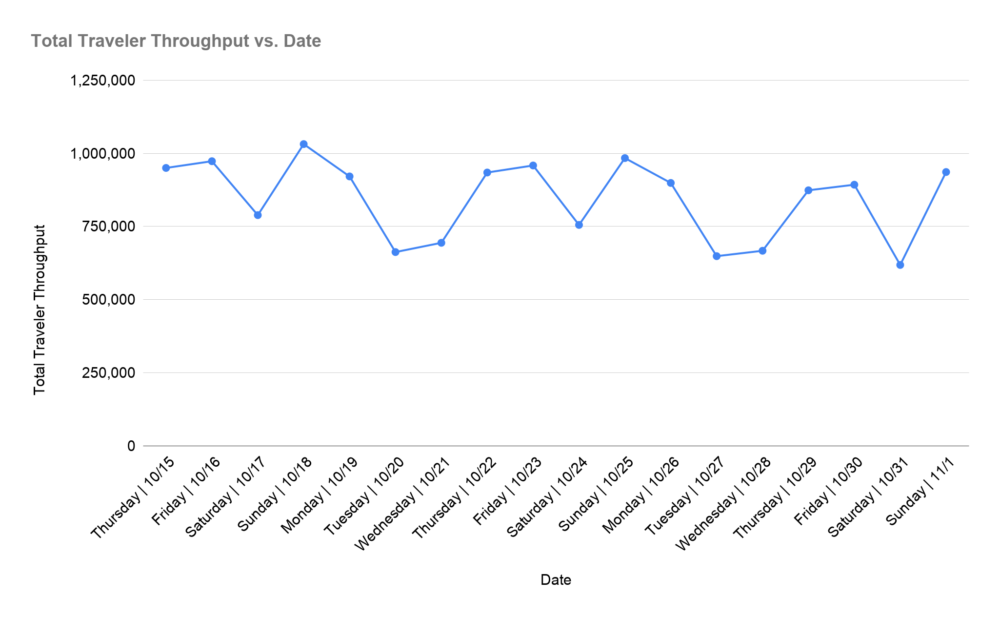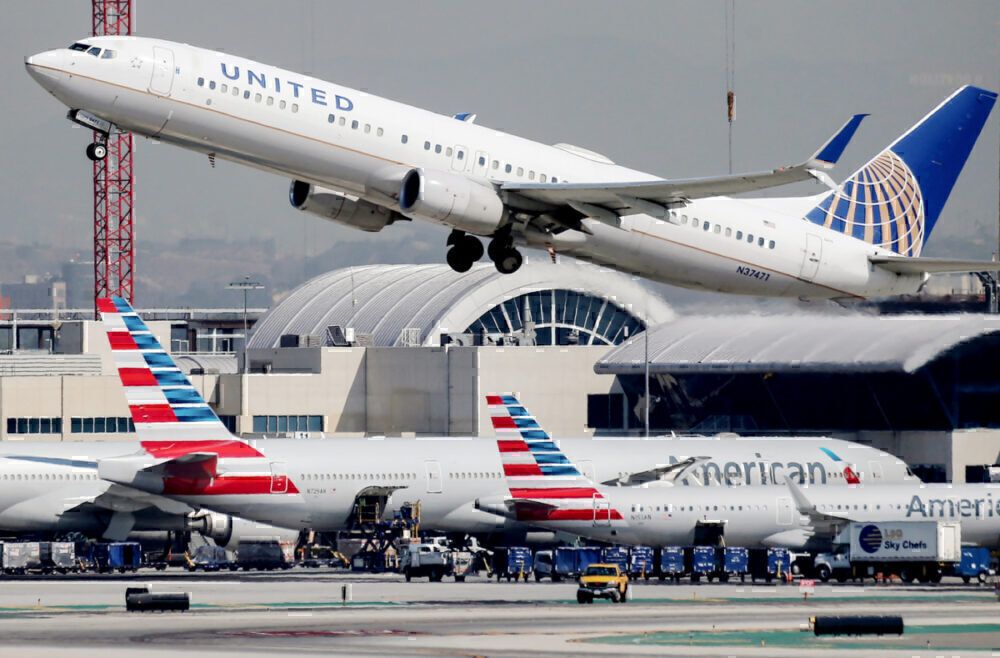On October 18th, the United States passed one million travelers in a day. This was the first time since March that TSA screenings crossed the one million mark. Since then, passenger numbers reverted to their pre-October 18th levels, with the weekends seeing numbers in the mid-to-upper 900k passengers a day, while heavier business travel days saw around 600k-700k in a day.
Hitting one million in a day only once since March
October 18th was a largely symbolic day, with one million passengers flying in 24 hours. It was a testament to the growing confidence and ability for people to travel since traffic bottomed out in the United States in April. However, since then, passenger numbers have declined slightly and seem to be on an almost downward trend.
Here's a graph detailing by day passenger numbers from October 15th-November 1st:
This past Saturday, October 31st, was actually the lowest day for screenings since October 15th in terms of passenger numbers. Meanwhile, Sundays serve as peaks.
Stay informed: Sign up for our daily aviation news digest.
The higher passenger count days are Thursdays, Fridays, Sundays, and Mondays. Fewer passengers are flying on Tuesdays, Wednesdays, and Saturdays. These patterns are, overall, indicative of a largely leisure footprint of travel. Leisure travelers tend to want to maximize the weekends and take fewer days off.
Tuesdays and Wednesdays have always been mostly business travel days, except for a few days here and there where they lead up to a major holiday like Christmas or Thanksgiving.
While numbers are down, they are relatively stable
Thus far, even though fewer people are traveling, they are relatively stable. Passenger numbers for October 25th were down only about 4.63% compared to the high of October 18th. Comparing October 18th to November 1st reveals a decrease of about 9.2%, while from October 25th to November 1st, there was only a 4.8% decrease. Here is a break down of other decreases in passenger numbers:
- Monday, October 26th, traveler count was 2.4% lower than October 19th
- Tuesday, October 27th, traveler count was 2.1% lower than October 20th
- Wednesday, October 28th, traveler count was 3.9% lower than October 21st
- Thursday, October 29th, traveler count was 6.5% lower than October 22nd
- Friday, October 30th, traveler count was about 6.9% lower than October 23rd
- Saturday, October 31st, traveler count was 18.1% lower than October 24th
It is not easy to say what these trends reveal off the bat. Some leisure travel days, like Thursdays and Fridays, saw over a 6% decline in passenger numbers week-to-week, but others, like Sundays and Mondays, were lower. Meanwhile, Mondays, Tuesdays, and Wednesdays were relatively resilient, with only marginal decreases in passenger numbers.
Airlines are determining capacity in the short-term
Over the last few weeks, as airlines have released updated investor guidance or held earnings calls, most airlines have reiterated that they are managing capacity in the short-term with an eye on flexibility. While flights may be available for booking two or three weeks out, there is no specific guarantee that those flights will run if yields remain low and airlines can consolidate those travelers. This has led to some passengers getting last-minute change notifications that have seen their flights go from nonstop to connecting itineraries or who have to face changes in departure times.
The opposite is also true. Some airlines have been upgauging certain flights, putting widebodies on routes that would previously see narrowbody service. This is especially true with service to leisure destinations.
There is still volatility in the domestic market. Unlike one the US has seen in the past, the latest surge in cases is turning out to be worse than the previous two, causing some concerns among health experts, but it is currently unclear if those spikes will discourage people from traveling. Even as cases spiked in July and August, there was some relative resilience with travel numbers holding steady.
There is still, however, a lot of hope for airlines. The Thanksgiving and December holiday season is a historically busy period for airlines in the fourth quarter. However, this year will not be as successful as previous years for the airline industry. Some people who would traditionally fly to a Thanksgiving reunion conduct those plans on a smaller scale in their own homes, electronically, or decide to drive.
Nevertheless, buckle up. There's still some turbulence to cross before the US airline industry is out of the clear.
Have you been traveling recently? Do you have travel plans coming up? What do you make of passenger numbers in the United States? Let us know in the comments!





